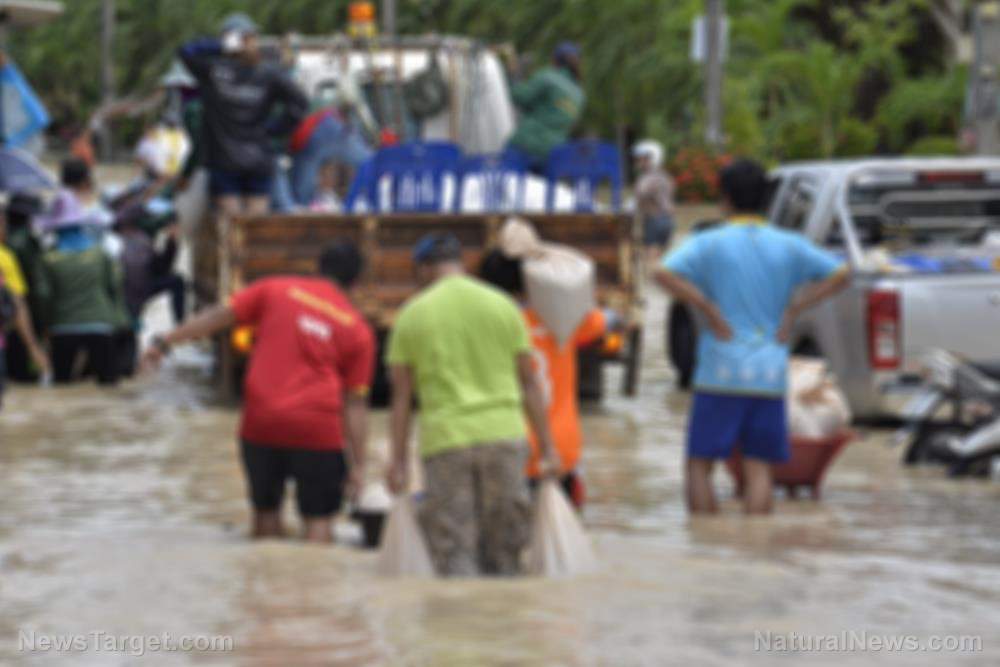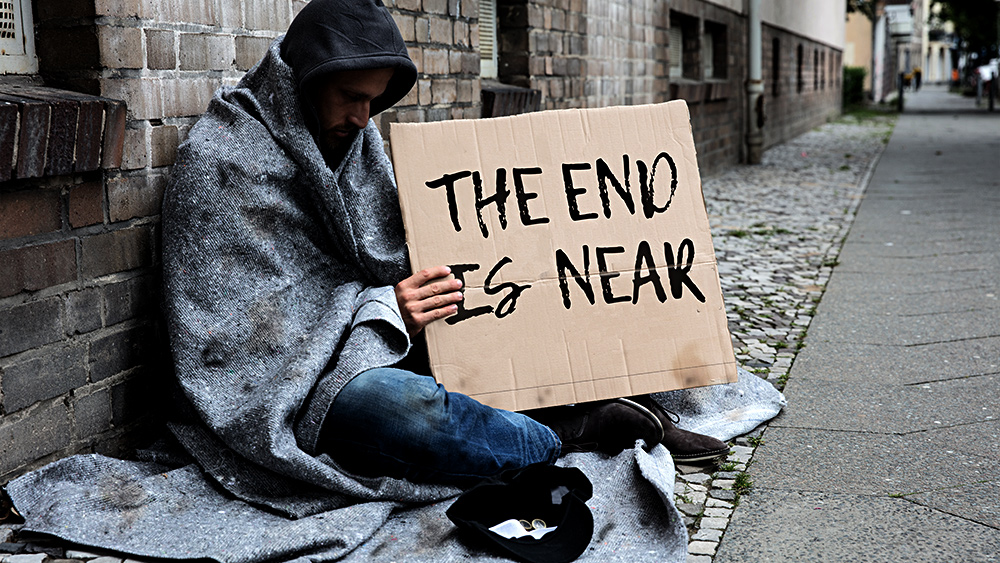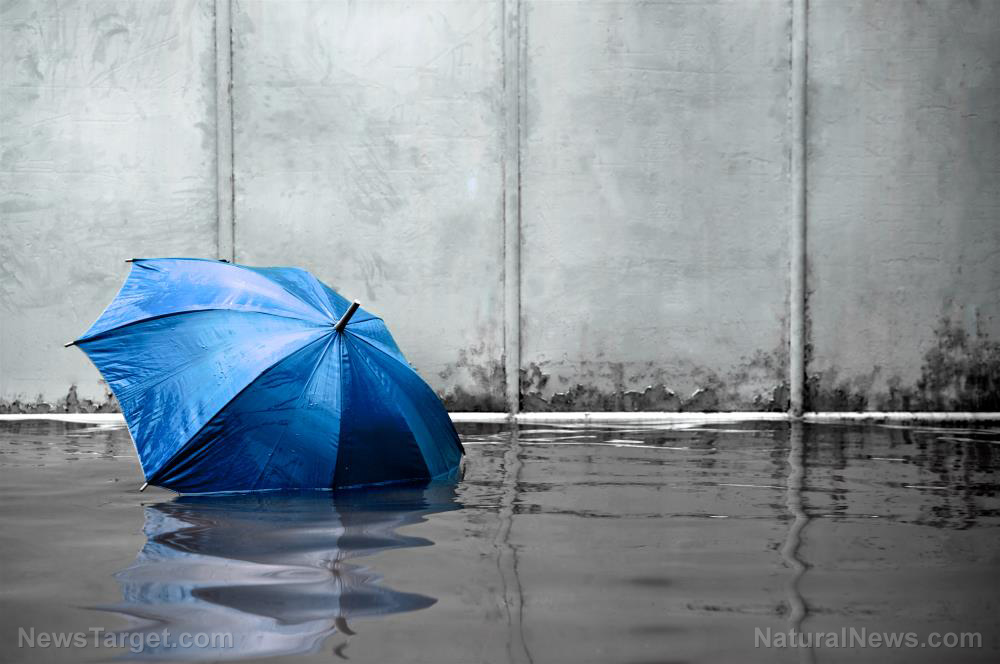Which SHTF situation is most likely to actually happen?
05/04/2019 / By Zoey Sky

The prepping lifestyle can be overwhelming for most people but at its core, preppers prioritize readiness in all aspects of their lives. But amid all the talk about prepping skills, survival gear, and food supplies, how do you know which disaster event has the highest chance of occurring within your lifetime? (h/t to TheSurvivalistBlog.net)
How to prepare for possible SHTF events
For this article, an “SHTF” event is defined as “any event that upends your life” after it occurs, such as flooding in a major city. These events would be classified as major disasters or catastrophes, not personal emergencies.
On the extreme end of prepping are those who will do whatever it takes to get ready for apocalyptic events like EMP attacks or nuclear world war. However, more realistic preppers are concerned about events that may likely occur in their lifetimes, such as hurricanes or tornadoes.
No matter where you land on the prepping scale of SHTF-readiness, the important thing is to get ready for disasters that happen yearly worldwide.
Take note that the events detailed below are more or less likely to occur depending on your location. According to the U.N.’s Office for Disaster Risk Reduction (UNDRR), the single most likely natural disaster to occur anywhere in the world is flooding.
Flood preparedness
Rising water is “the most likely disaster to befall you anywhere in the developed world,” with about 30 percent of all disasters categorized as flooding. This coincides with data gathered by U.S.-based disaster response agencies and insurers.
Regardless of what causes flooding, it is a deadly and destructive event that occurs yearly. In most cases, a local major body of water will overrun its banks due to several days of heavy rain. However, other factors like dam failure, ice or snow melting, or tsunamis can also create severe flooding. (Related: Real-life prepper moment: Midwest flooding shutting down roads and highways, making it impossible to restock store shelves.)
No matter where you live, you should prioritize flood preparedness since flooding creates serious survival challenges with its primary, second, and third order effects. Moving flood waters can be powerful and can sweep away people and vehicles alike. Flood waters may even dislodge whole buildings from their foundations.
Safety measures to follow before flooding
Follow the tips below so you can prepare before your area becomes heavily flooded.
- Get a first aid kit ready.
- Set up a Family Communications Plan.
- Put up barriers.
- Waterproof your basement.
- Monitor the news for flood warnings.
- Prepare bug-out bags (BOBs) for the whole family.
After your area had been flooded, you need to deal with various hazards such as broken glass, chemicals, debris, sewage, sharp metal wreckage, and even corpses. If possible, refrain from moving around in any flooded area to avoid disease.
You need to have a backup energy source in case your area loses power. Keep your pantry stocked so you have access to supplies like food and water even if the roads become impassable.
Other possible SHTF disasters
Even if your area isn’t prone to flooding, you could be facing other disasters like the ones detailed below.
Wind/Windstorms
Wind and windstorm events are an unpredictable hazard second only to flooding. You may encounter the events after disasters like hurricanes, tornadoes, or severe thunderstorms. Wind-related disasters make up at least 26 percent of all disasters worldwide.
To prepare for windstorms, fortify your home’s physical structure or take note of a close wind-rated shelter. Remove or secure anything close to your home that could become a hazard once the wind starts blowing.
Disease
The thirst most probable SHTF event is a disease outbreak. This includes epidemics, pandemics, or pestilence. The UNDRR reports that disease outbreaks account for about 11 percent of all global disasters.
Thankfully, much of the developed world has been spared from Ebola, typhoid malaria, and plague epidemics that have occurred in the Third World in recent decades.
Earthquake
While less frequent in many areas, earthquakes can be common and potentially devastating in certain locations. It is difficult to fully prepare for earthquakes, which account for nine percent of all disasters globally.
To prepare for an earthquake, devise an emergency escape plan and educate your family on proper evacuation procedures.
Drought
Droughts usually affect a region and they make up about eight percent of all natural disasters globally. Droughts can cause a slow decline and eventual lack of basic necessities and services. Food, water, and electricity will all be affected by droughts.
The heatwaves associated with droughts also claim lives. Even highly developed countries like the U.S. suffer from casualties due to heatwaves.
As a responsible and realistic prepper, you must prepare for these likely threats. Inform your family of your emergency preparedness plans, stock up on supplies, and fortify your home to ensure that your loved ones survive whatever disaster comes your way.
Sources include:
Tagged Under: bugout, chaos, disaster, disease, Drought, Earthquakes, epidemics, Flooding, floods, homesteading, hurricane, natural disasters, off grid, outbreak, preparedness, prepper, prepping, SHTF, survival, tornadoes, wind, windstorms



















